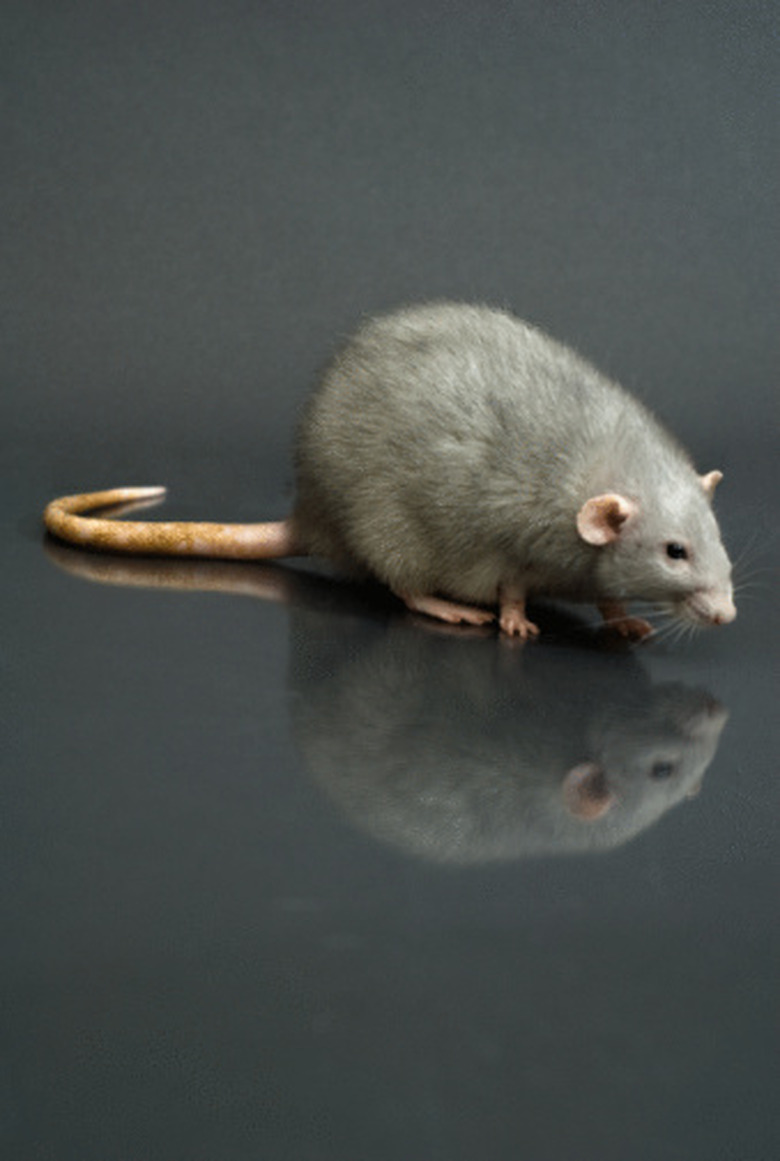Is It A Rat Or A A Squirrel In My House?
You might know a rodent has invaded your home, but you might not know if it's rat or a squirrel. Both are common household pests, and neither cares that it's an uninvited guest. If you catch a glimpse of the critter you can easily tell the two apart by their tails alone. Squirrels have bushy tails while rat tails are hairless and covered with tiny scales. Their habits can also give them away.
Activity
One of the easiest ways to discern if it's a rat or a squirrel invading your home is paying attention to the time of day the varmint is most active. Squirrels are diurnal creatures that are most active during the day. If your skittering and scampering starts around dawn and lasts through late afternoon, you probably have a squirrel on your hands. Rats are nocturnal critters, scampering about in the dark of night. They rely heavily on their sense of smell, although they are masters at quickly adapting to any change in their surroundings. If the rodent noise begins at dusk and kicks around through the night, it's likely there is a rat in your house.
Diet
Squirrels and rats both eat grains, nuts, and plant materials, but the squirrel's diet stops there. Squirrels are primarily herbivores and keep their feeding restricted to foliage, nuts and seeds. Rats enjoy their greens and grains, too, but they also eat meat, fish, slugs and snails. Human and pet foods are on their menu. Rats are likely to leave droppings around a pet's food dish and in or around garbage cans. Rats have no qualms about chewing through food packaging to get to the goodies inside, so if your fresh loaf of bread or fresh bag of dog food has fresh gnaw marks through the plastic or paper, it's likely your fellow diner is a rat.
Destruction
Just as squirrels are more discerning than rats when it comes to their diet, they are also more selective about what they will chew up and destroy. Squirrels have a field day chewing up plants. They are equally enamored with ornamental plants as they are with those that grow berries and foodstuff, especially fruits and nuts. Rats habitually chew through anything that stands in their way. They are particularly fond of chewing on anything made of wood, which includes ledges, doors, walls and molding, and are equally attracted to electrical wires. Rats are also likely to rip up and shred insulation from your walls and ceiling to line their nests.
Other Hints
Rats are masters at squeezing through small spaces, while squirrels generally need larger openings to maneuver. The average size of a squirrel's burrow opening, for instance, is 4 inches wide, while rats can slither through openings as small as ½ inch in diameter. Rats are also more likely to set up nests in your desk or kitchen drawers, kitchen cabinets or other small, secluded areas near a food source. Rats are also prolific swimmers and can enter your home through sewage drains or even the toilet. You are not likely to find a squirrel pulling the same type of move.
